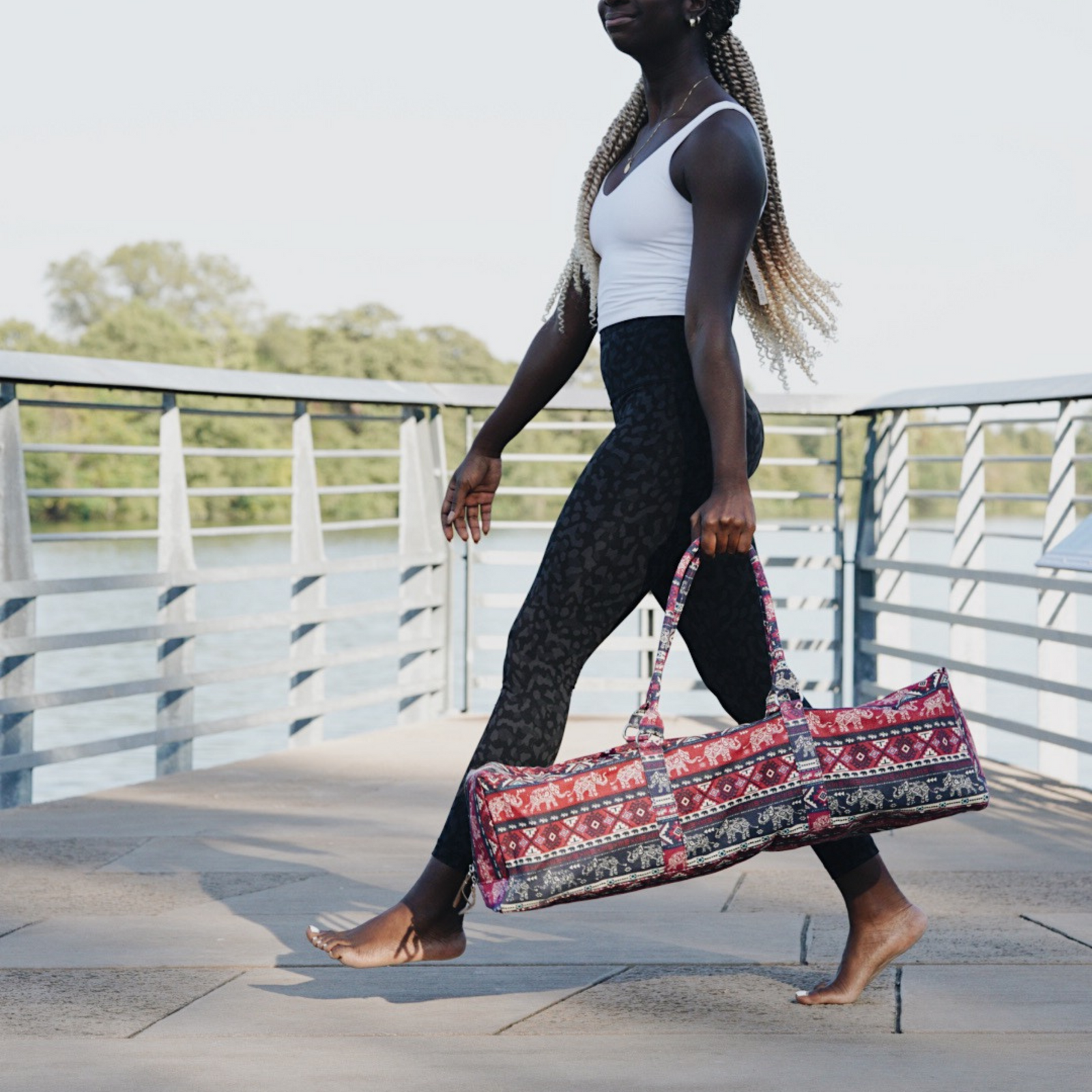Trying any kind of workout for the first time can be intimidating, whether you’re walking into your first spin class, taking the first step toward a half marathon, or reaching for the first rock climbing hold. Like any other workout, yoga may seem intimidating from afar, but with a few tips under your belt and a willingness to give it a try, you’ll be right on your way to a deeper, more mindful yoga practice. For all of you who are just starting your yoga journey, we have the answers to your most common questions — so let’s roll out our mats and get started.
What is yoga?
Ask anyone to define yoga, and you’re likely to get a multitude of responses. That’s because one of the best parts about yoga is that it can be whatever you want it to be. For some, it’s a form of exercise that allows them to feel strong and confident in their bodies. For others, it’s a meditative, spiritual practice for finding balance and enlightenment — and some even view yoga as a way of life. No matter your approach, anyone can reap the benefits of yoga, whether you’re a highly trained yogi or a brand new student to the practice.
The word “yoga” is derived from the Sanskrit word “yuj,” meaning to yoke, bind, or unite, which helps explain an important objective of yoga: to integrate the mind, body, and spirit to achieve oneness with the universe. While many forms of exercise focus primarily on the physical, yoga is unique in that it exercises both the body and the mind.
Roughly 2000 years ago, the Indian sage Patanjali is said to have systemized and compiled the practice of yoga into the Yoga Sutras, which outlines the eight-limb path called “ashtanga.” The eight limbs include the yamas (restraints), niyamas (observances), asana (postures), pranayama (breathing), pratyahara (withdrawal of senses), dharana (concentration), dhyani (meditation), and samadhi (absorption). However, today, most yoga practices focus primarily on asana, the physical postures.
What type should I start with?
Now that you’ve got the basics down, it’s time to figure out what type of yoga is best for you. There is a wide variety of yoga styles taught today, and while yoga is not a one-size-fits-all practice, the most important thing is finding the one that makes you feel the most comfortable and confident.
A good class for beginners (and the one that is most widely taught in America) is hatha yoga, a slower-paced, gentle form of yoga that uses breathing techniques to align the body and mind. Additionally, some types of yoga focus on physical intensity and continuous flow, such as Vinyasa or hot yoga, while others focus more on slowing down and finding balance, such as restorative yoga. Or, if you’re an animal-lover (or just looking for an Instagram-worthy yoga experience), there are even classes available where participants can downward dog right alongside a furry friend, such as in cat yoga, dog yoga, bunny yoga, or even goat yoga, aka “goga.”
Of course, there is no one style of yoga that is perfect for everyone. Finding the type that best suits you is key to getting started and will help you stick with it in the long run. If you’re not sure where to start, try looking for a class specifically for beginners that is taught by a seasoned yoga instructor who can teach you the foundations and make sure you are practicing safely.
Common Postures
Before you get started, it may be helpful to familiarize yourself with some of the foundational poses that you’re likely to see in any yoga practice. Poses are the building blocks of yoga, so whether you’re participating in a full yoga workout or simply wanting to take a midday stretch, these yoga poses are the perfect place to start.
Mountain Pose
While this pose may look like normal standing, Mountain Pose is actually an important starting point for any yoga practice. Strong yet simple, this pose brings awareness to posture and alignment by drawing a straight line from the crown of your head all the way to the soles of your feet. With shoulders back and legs strong, root down through your feet, lengthen your spine, and find quiet strength in this foundational standing pose.
Cat-Cow
Typically done together, the cat and cow poses are a great way to awaken the spine and gently massage your belly and organs. On all fours, begin with Cow Pose by dropping your belly toward the mat, lifting your chin and chest, and gazing up at the ceiling. Then, move into Cat Pose by drawing your belly up toward your spine and rounding your back toward the ceiling.
Downward-Facing Dog
One of the most well-known yoga poses, Downward-Facing Dog is a foundational posture for strengthening the shoulders and back while stretching out the backs of the legs and arches of the feet. Start on all fours and reach your hips high, stretching your heels toward the floor. Evenly distribute the weight between your palms and feet for a strong and rejuvenating stretch.
Child's Pose
For a calming and restorative break, Child’s Pose is the perfect way to pause and rest at any point during your yoga practice. If you’re feeling fatigued or want to refocus on your breath before continuing your flow, feel free to move into Child’s Pose by spreading your knees wide, keeping the tops of your feet on the floor, and allowing your belly to rest between your thighs and your forehead on the floor.
Gear
One of the best parts about yoga is that the only gear you truly need are your body, your mind, and the motivation — just jump into something comfy and get started (you don’t even need shoes!). However, as you progress into your practice, it may be helpful to have a yoga mat handy (linking ours here!), especially if you are practicing on a hard surface or prefer to bring your own to your studio or gym. Choose one with a good grip that prevents slipping and sliding, and make sure to clean it regularly.
Is yoga right for me?
The short answer? Definitely! Yoga is for everyone, whether you’re a pro athlete who wants to lengthen and stretch overworked muscles or a person recovering from an injury who wants to rebuild strength. Even better, yoga can be modified to suit your level of physical fitness and experience, so you can make your practice whatever you want it to be. So, if you haven’t started your yoga journey and aren’t sure if it’s for you, the best way to know is to give it a try.







